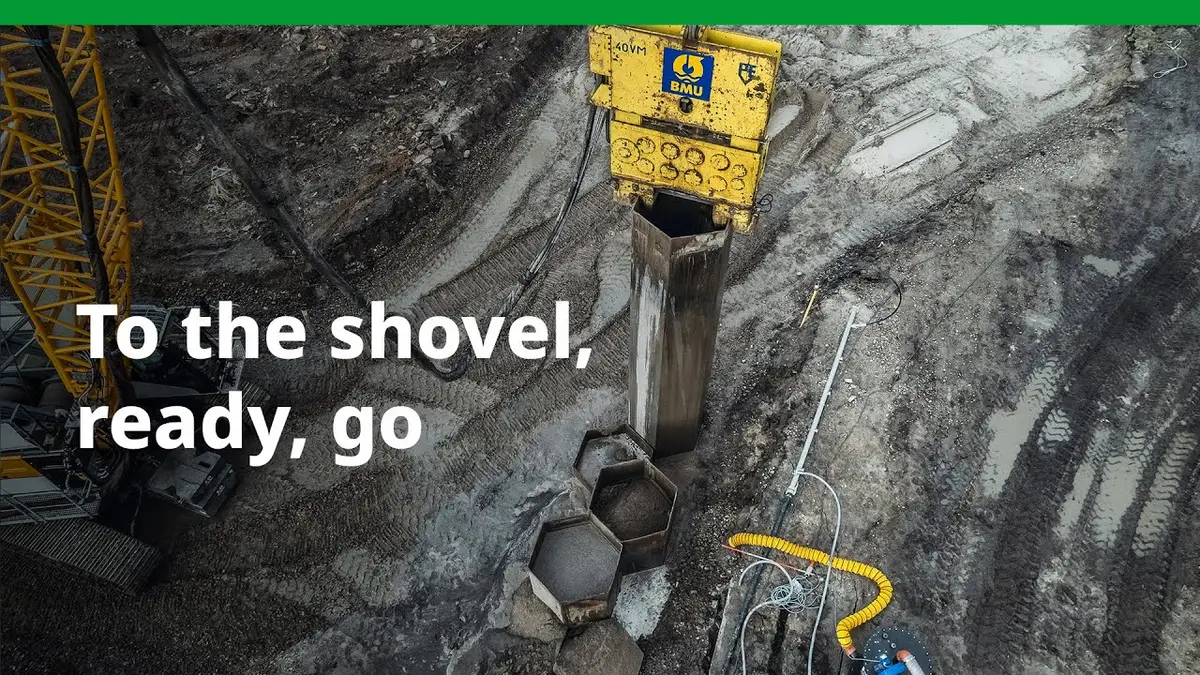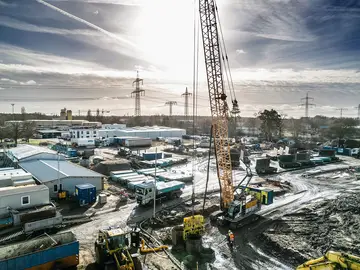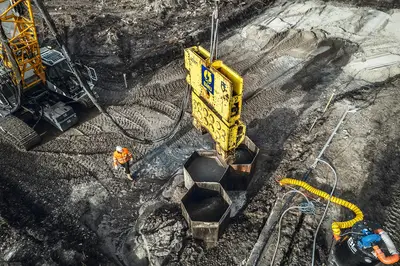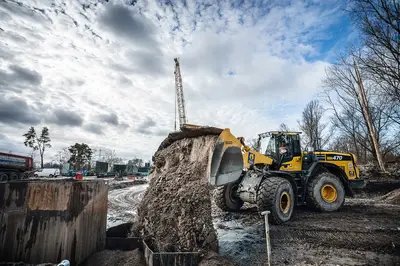Inspired by nature: Soil replacement using the honeycomb method
Velten, Germany – The charming small town of Velten is located close to Berlin. It is well known for its remarkable treasure trove of historical buildings with lovingly renovated "Töpper" (potter) villas and as an important industrial site in the Oberhavel region. The former company called Polychemie Velten GmbH, which manufactured numerous chemical products for the leather and sugar industry on that site until 1990, also forms part of this history. This resulted in contamination of the soil and groundwater. The solution is soil replacement, but not in a traditional way. A special method is used instead, which has been significantly inspired by nature. And right in the center of the action is Bauer Resources, the leading remediators of contaminated sites in Germany.
Systematic and efficient
In November 2023, the Bauer Resources specialists got the green light. "We approach a project like this one very systematically", says Friedrich Leifheit. It all starts with the preparatory works and the creation of the infrastructure for the construction site. "After all, good preparation and design are the key success factors", the experienced project manager in the environmental division at BAUER Resources GmbH continues to explain. The next step is the replacement of more than 2,000 m3 of soil using the honeycomb method. As part of this process, hexagonal steel elements are inserted in a honeycomb structure using a high-frequency vibrator attached to a duty-cycle crane. Afterwards, the honeycombs are dug out using a special excavator. The method has several advantages, as Holm Uhlig, a sales representative at Bauer Umwelt, the environmental division of BAUER Resources GmbH, knows from many years of experience as a project manager: "On the one hand, the honeycombs make it possible to excavate large areas efficiently and evenly, allowing the thorough removal of the contaminated material. On the other hand, the hexagonal cross-section of the honeycombs prevents possible gaps and any resulting penetration of contaminants into the surrounding soil."
Mission: safety first
Since protecting people and the environment is the top priority in a project like this, safety took center stage right from the start. And particularly due to the excavated soil being contaminated with volatile chlorinated hydrocarbons (CHC), the team works extremely carefully. For example, the excavated material is stored in liquid-tight and gas-tight lidded containers to prevent harmful substances from escaping. "In total, we are excavating approximately 2,200 m3 of soil", explains Friedrich Leifheit. And what happens to the polluted soil? “It is disposed of properly so approximately 110 truck journeys are needed to remove it." After the excavation, the honeycombs are filled with clean soil and the steel elements are carefully removed.
For a fresh start
Work on the construction site will continue until April 2024. By this point, the groundwater flow will be secured and the surface will be restored. This means that the former polychemical plant is finally consigned to history and the large area is ready for a new chapter as an attractive industrial park. The development of the area is expected to begin in the coming months. This will finally bring this brownfield site back to life. "We are delighted that, thanks to the excellent work carried out by everyone who has been involved in the project, we can complete works at the construction site on schedule and contribute to the site getting a new start", summaries Holm Uhlig.
Project Video

Press Images
Download
Your Contact
Specialized press Resources, Redevelopment, Environment



